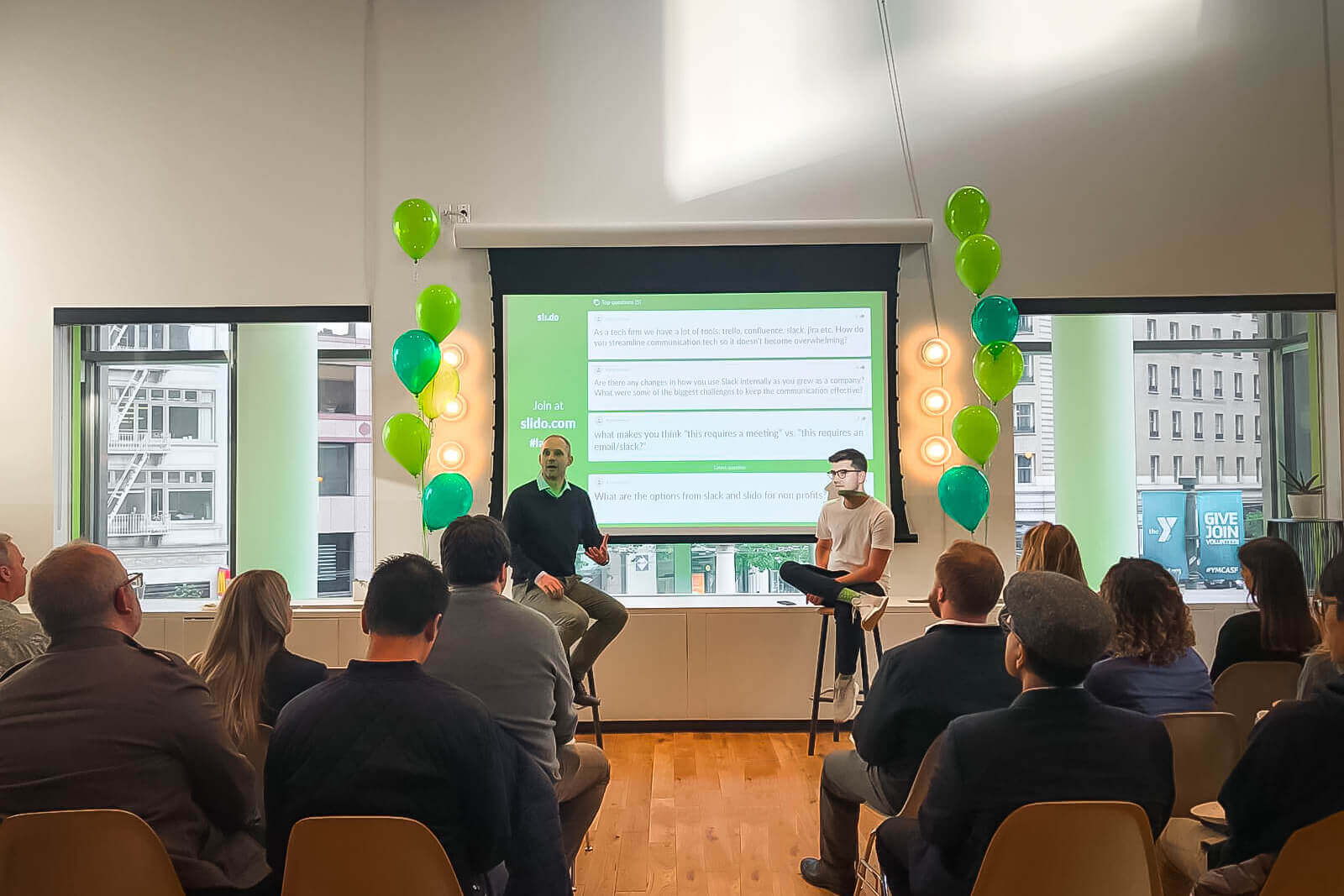Jim Ray, Slack’s Enterprise Developer Advocate, gives us some “backstage” insights into what communication looks like in a company that has transformed the way companies communicate.
One may say that Slack is becoming the same for team communication as Google for searching the web. In four years, a tool for small teams has transformed into a communication platform that has enabled a massive reduction in time-consuming team meetings with its functionality.
We spoke to Jim Ray, Slack’s Enterprise Developer Advocate, about the transformation of internal communication and team meetings.
This is an abridged and edited transcript of the interview. You can watch the original version below. (The interview starts at 04:41.)
What does a productive meeting look like at Slack?
Primarily, it’s half an hour long. And, it’s one that I enter knowing exactly what we’re going to be discussing, whom I’m going to be talking to, and that I’ll leave having accomplished what we set out to do. I know, it sounds pretty boring.
We don’t have any magical thing or an AI bot that’s telling us all the answers just sitting there, yet!
Fundamentally, Slack is cool and exciting but the problem that we’re solving is one with human nature and it’s going to be a tough nut to crack. Meetings are the same.
The minute we gather around we need to figure out how to have these conversations. Unfortunately, we don’t have a secret sauce, there are still many meetings that I leave, and think that was not a good use of my half-hour.
Slack reduces the number of meetings that might otherwise have been unproductive. It’s interesting to see that technology has evolved in many ways, but we still seem to be organizing meetings in the same way – do you see any best practices or any ways in which Slack is helping?
Yes, believe it or not, we still have a few meetings at Slack. The first thing that you can do is to eliminate check-in meetings, like stand-ups. We have a dedicated check-in channel, where we just set up a simple reminder, for example, every morning at 10.00 a.m., post in threads what your check-in status is. It’s amazing how powerful something like that is.
You’ve got a record of it right there and people don’t have to rush to the office in the morning, which could be a real blocker. But I think for the most part, there is a standard meeting etiquette, like having an agenda or make sure everyone in the room actually needs to be there.
What makes you think something requires a meeting instead of sending a quick Slack message or an email?
I feel like there are a lot of conversations that happen on Slack that could have been quickly resolved in a meeting. Most of my team is in San Francisco, I live in New York, we have people in Dublin and we still have a weekly check-in meeting that’s not about letting everybody know what you’re working on but that is more of a team culture aspect – just reminding everyone what you sound like.
Make sure you have the right people in the room, but sometimes it’s even more important not to have the wrong people there.
When you talk about culture and the role meetings play in it, what about meetings like all-hands meetings and those big team meetings? Do you have them monthly at Slack?
We’ve got a really strong culture of all-hands, and it’s one of the things I love about Slack. Keep in mind, Slack has 1,000 employees and we’re on every continent but Africa and Antarctica. Stewart, our CEO, travels to all these places and hosts all-hands once a month. We have an AMA channel – we’re not using Slido – yet. I think it’s incredible for a company of this size. All-hands are hugely important to our culture.
We have this ongoing conversation where people’s voices are being heard, issues are being raised, and sometimes, the questions come up multiple times before they actually get answered but that’s part of being part of a big company.

How do you make sure that when the company is growing and new people are joining the same culture is being shared?
It’s hard. Slack – the product is a great thing, but Slack – the company is also amazing. We’ve been lucky to manage to hire 1,000 amazing people. We have a “no-asshole” policy in our company as well. The hiring process can get really difficult because of that.
You might not hire someone who is super-technically-amazing-rockstar-ninja because they’re only going to help create Slack the chat-app, not Slack the company.
As a tech company, we are using many tools: Trello, Confluence, Slack, etc. How can we streamline the communication so it doesn’t become overwhelming?
This is most of what I work on personally. Ideally, we’d want all that communication to be happening inside Slack.
We connect really easily to your software, we do this one thing and do it well. We’re not a full-on suite of 15 other products, we just let you connect other things to the platform.
Content switching throughout your workday is a problem. The degree to which we can reduce this is a place where I feel like we can add a lot of value. The flipside of this is that Slack doesn’t make it much easier to do different things within one, often we’re just adding to that noise. And this is something about which we’re very thoughtful.
There is an interesting question on Slido from the audience here. How have things changed internally, using Slack yourselves with the integrations being part of it? Is it also overwhelming at Slack to use Slack?
We use Slack more than anyone else. We have a lot of institutional knowledge about how we think people should use Slack. One of our success metrics is to figure out how to get an x number of companies to use Slack the way we use it now.
We work with this pyramid, where each level corresponds to a different level of Slack use. On the very bottom, you’ve got most of the workforce where Slack is the de facto communication tool. On the next layer, Slack is used not only for direct messages; teams also use it for creating public channels and they have active conversations in those channels.
They make decisions there, have fewer meetings thanks to that and there is increasing transparency, which we definitely consider a step up.
The next step is installing integrations. As you get closer to the top, you start building these integrations yourself. This is why, on the product side, we’re focused on making it as easy as possible for you to build your own apps and integrations. We want you to be on the top!
Capture and address your team’s most burning questions.




